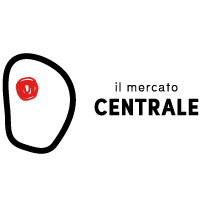The survey by Human Company and Istituto Piepoli confirms the stability of the tourism sector, with open-air destinations proving particularly popular
In summer 2025, the propensity to travel remains strong: the numbers are with essentially stable compared to last year, and significantly higher than the levels recorded in 2023. For many Italians, summer is already in full swing, while others are preparing to set off in the coming weeks. In fact, an estimated 34 million Italians are planning to treat themselves to at least one holiday between June and September, i.e. 57% of the population. This percentage is only slightly lower than the 59% recorded in 2024, but significantly higher than the 50% recorded in 2023. Outdoor tourists are key drivers of this trend, claiming their place as the most active and motivated travellers: a strong 82% of people who prefer this style of holiday have already planned or intend to plan a summer getaway.
These numbers emerged from the new edition of the Open-Air Tourism Observatory[1] from Human Company, a historic Italian hospitality brand that has been active in open-air tourism for over forty years, and Istituto Piepoli. The results of the survey highlight a further growth in the percentage of people who are planning an outdoor holiday: it stands at 23%, i.e. almost a quarter of the market (in 2023, the percentage was just 15%), with tourist villages and farm stays taking the top spots. The freedom offered by outdoor travel remains a key driving factor (35%).
Summer is getting longer: tourists are increasingly interested in the less traditional months
In terms of the preferred period for summer holidays, July and August remain the most popular choices (the former is preferred by 32% of respondents and 34% of outdoor travellers; the latter is preferred by 44% of respondents and 37% of people who choose an open-air holiday); however, there is a growing interest in the months of June and September, mainly motivated by economic reasons (35%; 34% of outdoor travellers), by a desire for less crowding (32% and 28%), and by favourable weather conditions (30% and a strong 36% for outdoor tourists, for whom it is the main motivation). June in particular was chosen by 13% of Italians and 19% of outdoor tourists (an increase of 2% and 5% respectively compared to 2024), while September was preferred by 25% of general respondents (+4%) and 27% of outdoor travellers (+8%).
When it comes to holidays, Italians are still very attached to the classics, with a few new additions
The seaside remains the top choice at 62%, followed by artistic cities (20%) and mountains (17%). A similar trend has emerged among outdoor travel fans, who also prefer the sea (55%), followed by the mountains (18%) and artistic cities (16%). The real novelty for summer 2025 is the growth of alternative travel formulas, especially in the outdoor sector: this year, food and wine holidays are growing (with a rise from 3% to 12% of preferences), in addition to "slow" holidays (from 5% to 7%), sports holidays (from 4% to 5%), and religious trips (from 0% to 2%).
The choice between Italy and abroad remains stable for summer 2025
This year, the ratio of Italian to foreign holidays has remained stable: 81% of Italians chose Italy, while only 19% opted for foreign destinations. The most popular regions are Sicily, Tuscany and Apulia (all 12%), followed by Trentino-Alto Adige (9%, making the top 5 for the first time) and Emilia-Romagna (8%). The outdoors is increasingly establishing itself as a strategic resource for national tourism: among travellers who prefer this option, 85% chose Italy (+6 points compared to 2024), while interest in foreign destinations is declining (15%, -6%). In this segment, Apulia leads the pack (15%), followed by Tuscany (13%) and Calabria (12%).
Travellers once again want to take the right amount of time to unplug
The difference in holiday days, i.e. the gap between tourists who are planning to travel for more days and those who are planning to spend fewer, has been progressively improving over the last few years: from -13% in the 2023 survey to -7% in 2024, to an even smaller forecast of -3% for 2025. This trend indicates that, although there is still a slight tendency towards shorter holidays compared to previous years, the gap has almost closed. Once again, fewer Italians are planning to shorten their stay, suggesting greater stability and confidence in their travel habits.
Outdoor tourism: growing spending on quality experiences
The average holiday budget also grew this year, at around 1,950 euros (it was just over 1,400 euros in 2023 and 1,700 euros in 2024). Furthermore, the average spending on outdoor holidays remains higher, rising from just over 2,000 euros in 2024 to nearly 2,700 this summer. The gap between overall expected spending and spending on outdoor activities was therefore over €700, suggesting that outdoor tourism is no longer a budget option, but is increasingly a conscious choice, based on the quality of the experience; travellers who opt for this option are therefore willing to invest a significant budget, often above average.
Between price increases and budget constraints, well-planned holidays are a must
Despite increasing available budgets, economic concerns are still playing a central role in travel decisions. The most pressing issues are the increased cost of living (bills, rent, food) and the prices of tourist services (transport, catering, accommodation), both indicated by 66% of Italians as determining factors. As a result, holidays are now planned with an increasingly rational and budget-conscious approach, where every choice – from destination to length of stay – is influenced by economic sustainability. 59% of travellers claim that they must make more economical choices, while 55% have a reduced spending capacity compared to the past. Among the people who are not inclined to go on holiday (43%), the main reason is still economic, chosen by 41% of respondents – a decrease compared to 2024, when it was 50% – followed by health reasons (34%, an increase of 6% compared to 2024).
"The Observatory data confirm that Italians' desire to travel remains strong, despite economic uncertainties. Against this backdrop, outdoor tourism continues to experience steady growth, reaching nearly a quarter of the market this summer. This significant expansion reflects increasingly wide-reaching interest and an ability to concretely respond to travellers' changing needs. The people who appreciate this type of holiday are willing to invest in authentic, quality experiences: a sign of a new travel culture with a greater focus on freedom, nature, and sustainability. However, despite this positive trend, we also noted a countertrend in the flow of foreign tourists to Italian artistic cities, which does not appear to be following the same growth trend. This fact deserves attention, and will have to be monitored with particular care in the coming months," emphasised Domenico Montano, General Manager of Human Company.
"Summer 2025 has confirmed Italians' desire to travel, as the numbers have remained high despite the economic and international context. But the most interesting development is the boom in outdoor tourism: an increasingly popular holiday option. People who choose the outdoors do so with conviction, investing time and resources to enjoy varied and authentic experiences, in contact with nature and with a more free-spirited lifestyle. Additionally, open-air travellers are also willing to spend significantly more than traditional travellers. It's a clear sign: travel is reclaiming its central place in people's lives, not as a luxury, but as a priority," noted Livio Gigliuto, President of Istituto Piepoli.
[1] Survey carried out from 13 to 20 June 2025 using the CATI/CAMI/CAWI technique on a sample of over 2,500 individuals, representative of the adult Italian population.



